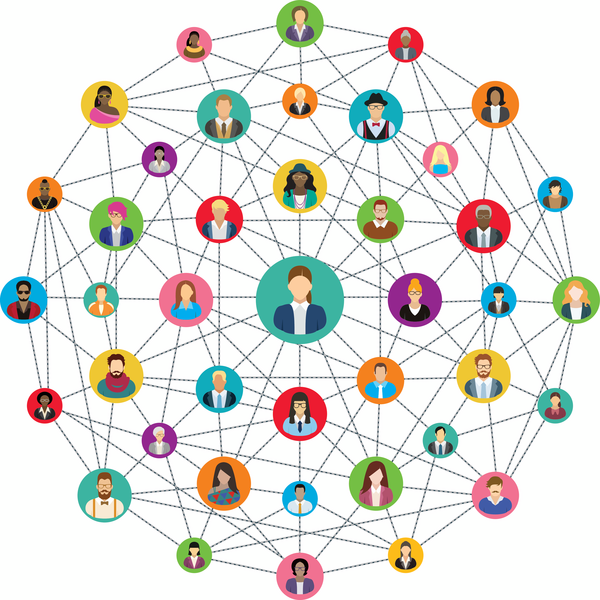ATD Blog
Four Ways to Use Social Media for Learning in the Real World
Tue Oct 21 2014

Despite the fact that accessing social media is the number one mobile activity today, according to Adobe, few organizations have adopted these technologies for learning due to a lack of policy.
Media theorist Marshall McLuhan foresaw the implications of digital computing in the 1960s. In his book, The Medium is the Massage: An Inventory of Effects, he said, “Education must shift from instruction, from imposing of stencils, to discovery, to probing and exploration, and to the recognition of the language of forms” (McLuhan and Fiore, 1967).
Social media follows that line of thinking by allowing people to take control of what they want to learn at any time of the day, and from any location with mobile or Wi-Fi service.
Here are some other ways that employees can use social media for mobile learning.
Curation
Using social media for mobile learning helps curate information within a personal learning network or a community of practice. It does this by connecting employees with each other and with employees in similar roles in other companies.
Internal sharing
Employees within the same company can share information within minutes. Jane Bozarth wrote for Learning Solutions magazine about how an individual from one company shared a conference recap with his colleagues:
“Users, armed with phones equipped with video cameras, are increasingly comfortable with and adept at creating and sharing their own videos. Encourage them to be ‘social’ in the sense of contributing to course materials and organizational communication. When ... Craig Taylor was the company’s sole employee sent to Las Vegas for DevLearn, he ended each day by capturing about five minutes’ worth of reflection about the experience: speakers he’d seen, an overview of key points, a few critical takeaways. In this way, he was able to document his day, reflect on new learning, and share it with those back at the office” (2013).
External sharing
Employees working for different companies but in similar roles can exchange ideas through social media in a variety of ways.
They can engage in Twitter chats, for example, using a common hashtag. LinkedIn has discussion groups on different topics that workers can browse throughout the day, participating in the group discussions that appeal to them.
Both methods have the potential for employees to expand their networks, ask questions, as well as be seen as an expert by providing answers.
Location
The combination of social media and mobile devices can give employees an idea of the whereabouts of a colleague. With many employees working from the road, social check-ins on enterprise social networks (and even on public ones) let colleagues know when someone may not be at his or her desk.
Columnist Clive Thompson writes about this idea in his book, Smarter Than You Think (2013). He references the term “proprioception,” which is the body’s awareness of where its limbs are located, as a metaphor for our potential awareness of the status of our colleagues.
Thompson relates this to the workplace: “When groups of people—friends, family, workmates—keep in lightweight online contact, it gives us social proprioception: a group’s sense of self. Used correctly, social proprioception can make one’s work life less frazzled by reducing the constant stream of interruptions. A group that’s connected in an ambient fashion can—counterintuitively—spend less time on communication, particularly the writing and reading of endless email.”
At the same time, the use of social media in the workplace has resulted in a major increase in the amount of information to which we need to pay attention. Social media and networks that feature the ability to organize and store information for later retrieval can be valuable tools for the enterprise by preventing the loss of institutional knowledge through employee attrition, changes in careers, and retirement. For instance, the National Archive and Retired Federal Employees Association calculates that 10,000 years of American federal worker experience is lost every day. According to The Washington Post that is the equivalent of forty-six days every second.
Enterprise social networks such as Jive, Yammer, and Tappestry all provide the ability to store and categorize information in their own ways if they are part of your overall strategy for preserving this knowledge.
Bottom line
The world of work is beginning to embrace the use of social media for mobile learning. To begin, develop your goals for using social media. Then find a network that works for you based on those goals, whether it’s available publicly (like Twitter) or privately (choose an enterprise social network or an internal wiki). Next, find what others are talking about and contribute by answering questions or asking your own. Finally, keep evaluating to see whether you have to make adjustments to your social media strategy, whether it’s for you as an individual or for your company.
No matter how you use social media for mobile learning, you’re bound to make some discoveries. Because of how many people use social media, it’s a great first step into mobile learning for your enterprise.
Editor's note: The following is an excerpt from Mastering Mobile Learning: Tips and Techniques for Success, co-published by Wiley and ASTD. This excerpt has been adapted with permission from the publisher, Wiley, copyright © 2014.
